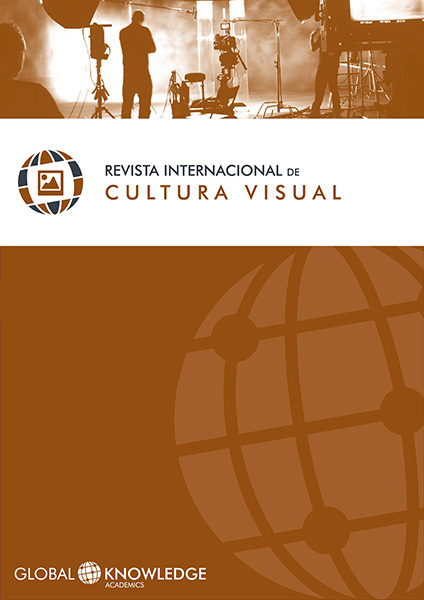The Gender Inequality in Television: Women in the new Formats of Telereality
DOI:
https://doi.org/10.37467/gka-revvisual.v3.491Keywords:
Television, Women, Gender, Equality, TV Program, Programming, Telereality, Reality -Show, Language, Mul-tiscreen, Feminism, Androcentrism, SexismAbstract
The research analyzes the image of women in a specific television program as an example of inequality in all areas, not just communicational, but educational, economical, social and structural. The study of a television format shows the communicational discrimination under the presence of an androcentric and sexist language that categorizes a typology of women with the objective consequences of gender inequality between the sexes.
Downloads
Global Statistics ℹ️
|
2168
Views
|
5493
Downloads
|
|
7661
Total
|
|
References
Arana, E. (2001). Estrategias de programación televisiva. Madrid, España: Síntesis.
Galán, E. (2007). La imagen social de la mujer en las series de ficción. Cáceres, España: Universidad de Extremadura, Servicio de publicaciones.
García, I. y Freire, E. (2000). Gran Hermano. El libro. Los secretos de un programa que ha hecho historia. Barcelona, España: Planeta.
Gila, J. y Guil, A. (1999). La mujer actual en los medios de comunicación: estereotipos cinemiicos. Juana Gila y Anana Guil Sevilla. Comuncar, 12. Pag 90. a la cantidad de avances sigue siendo nicaci pese a que la legistatográficos. Huelva, España: Revista Comunicar.
González, J.J. (2002). Derecho de la comunicación. Barcelona, España: Códigos Ariel.
Imbert, G. (2003). El zoo visual. De la televisión espectacular a la televisión especular. Barcelona, España: Gedisa.
Imbert, G. (2008). Bienvenido al desierto de lo hiperreal. El País, 1 de noviembre de 2008. Disponible en http://elpais.com/diario/2008/11/01/opinion/1225494004_850215.html (Consulta: 13 de mayo de 2013).
Piñeiro, M. T. (2011). Nuevos contenidos en comunicación a partir de las EEES. Madrid, España: Visión libros.
Siles, B. (2005). La mirada de la mujer y la mujer mirada. En torno al cine de Pilar Moró. Revista Razón y Palabra, 46. Disponible en http://www.razonypalabra.org.mx/anteriores/n46/bsiles.html (Consulta: 14 de febrero de 2013).
Suárez, J. C. (2007). Estereotipos de la mujer en Comunicación. Mujeres en red, 13 de noviembre de 2007. Disponible en www.nodo50.org/mujeresred/IMG/pdf/estereotipos.pdf (Consulta: 21 de febrero de 2013).
Velarde, O (1997). Nuevos tratamientos narrativos en la televisión: los realities show. Zacatecas, México: Universidad autónoma de Zacatecas: Congreso internacional de lenguas modernas.
Zweig, S. (2000). Novela de ajedrez. Madrid, España: El Acantilado.
Downloads
Published
How to Cite
Issue
Section
License
Those authors who publish in this journal accept the following terms:
-
Authors retain copyright.
-
Authors transfer to the journal the right of first publication. The journal also owns the publishing rights.
-
All published contents are governed by an Attribution-NoDerivatives 4.0 International License.
Access the informative version and legal text of the license. By virtue of this, third parties are allowed to use what is published as long as they mention the authorship of the work and the first publication in this journal. If you transform the material, you may not distribute the modified work. -
Authors may make other independent and additional contractual arrangements for non-exclusive distribution of the version of the article published in this journal (e.g., inclusion in an institutional repository or publication in a book) as long as they clearly indicate that the work was first published in this journal.
- Authors are allowed and recommended to publish their work on the Internet (for example on institutional and personal websites), following the publication of, and referencing the journal, as this could lead to constructive exchanges and a more extensive and quick circulation of published works (see The Effect of Open Access).













